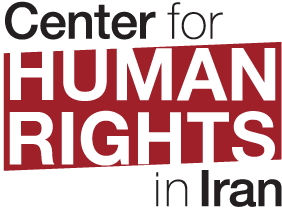Implications
The increase in speed has had important implications that has affected all aspects of Iranian society—political, social, business, academic and cultural. It allows the transfer of large files, video streaming, the use of VoIP (Voice over Internet Protocol, used in messaging applications such as WhatsApp, Telegram and Signal), video conferencing and other services that greatly increase and improve access and more sophisticated information sharing. This has not only facilitated general communication amongst the public, it has been critical to the work of journalists and activists in Iran. Greater internet speeds have also enhanced professional, academic and commercial communications, as well as the ability to develop Iranian start-ups and online services.
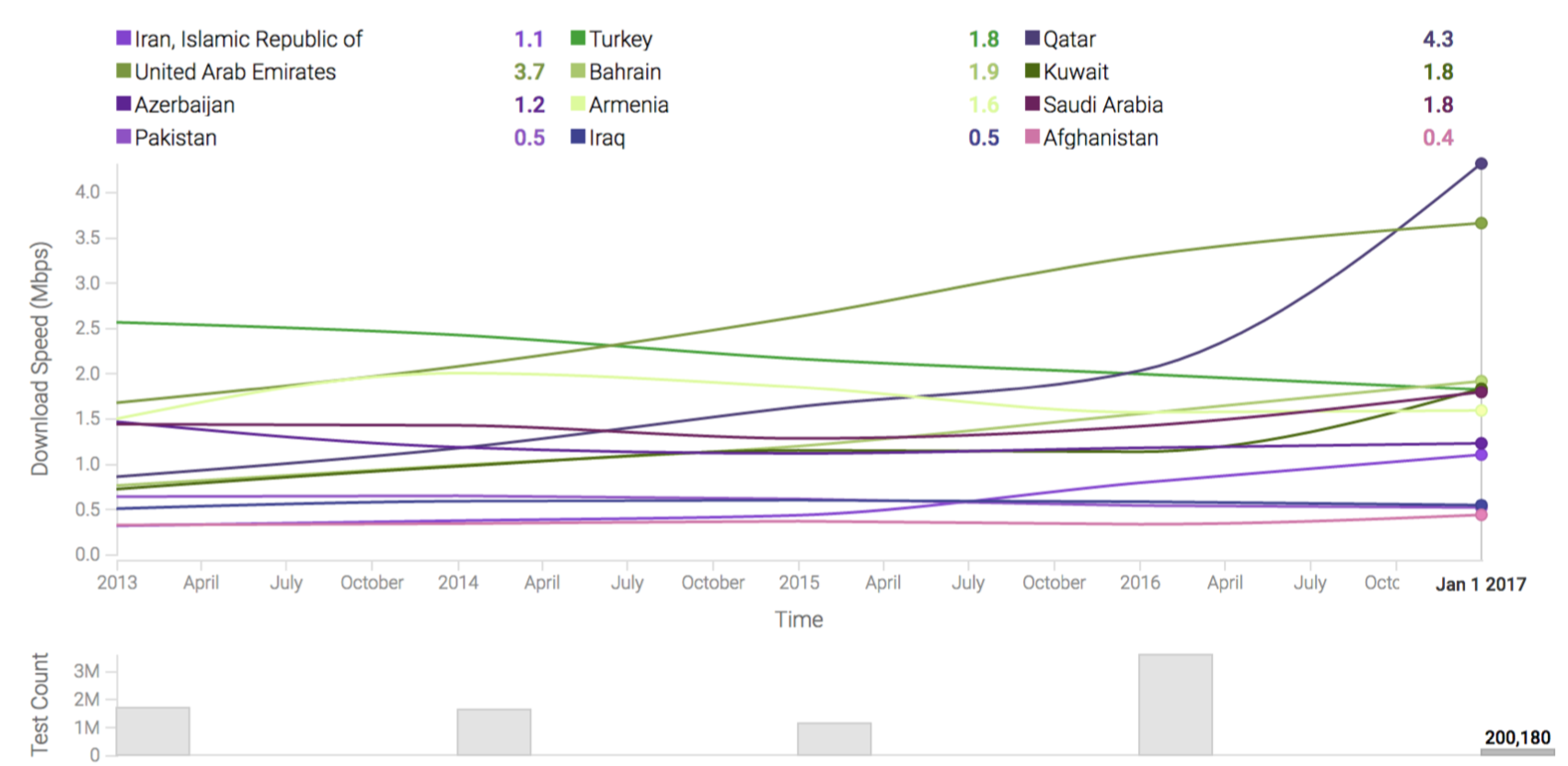
Chart shows Internet speed and bandwidth changes since the beginning of 2013 through July 1, 2017 in 12 neighboring countries of Iran, based on data from M-Lab’s website.
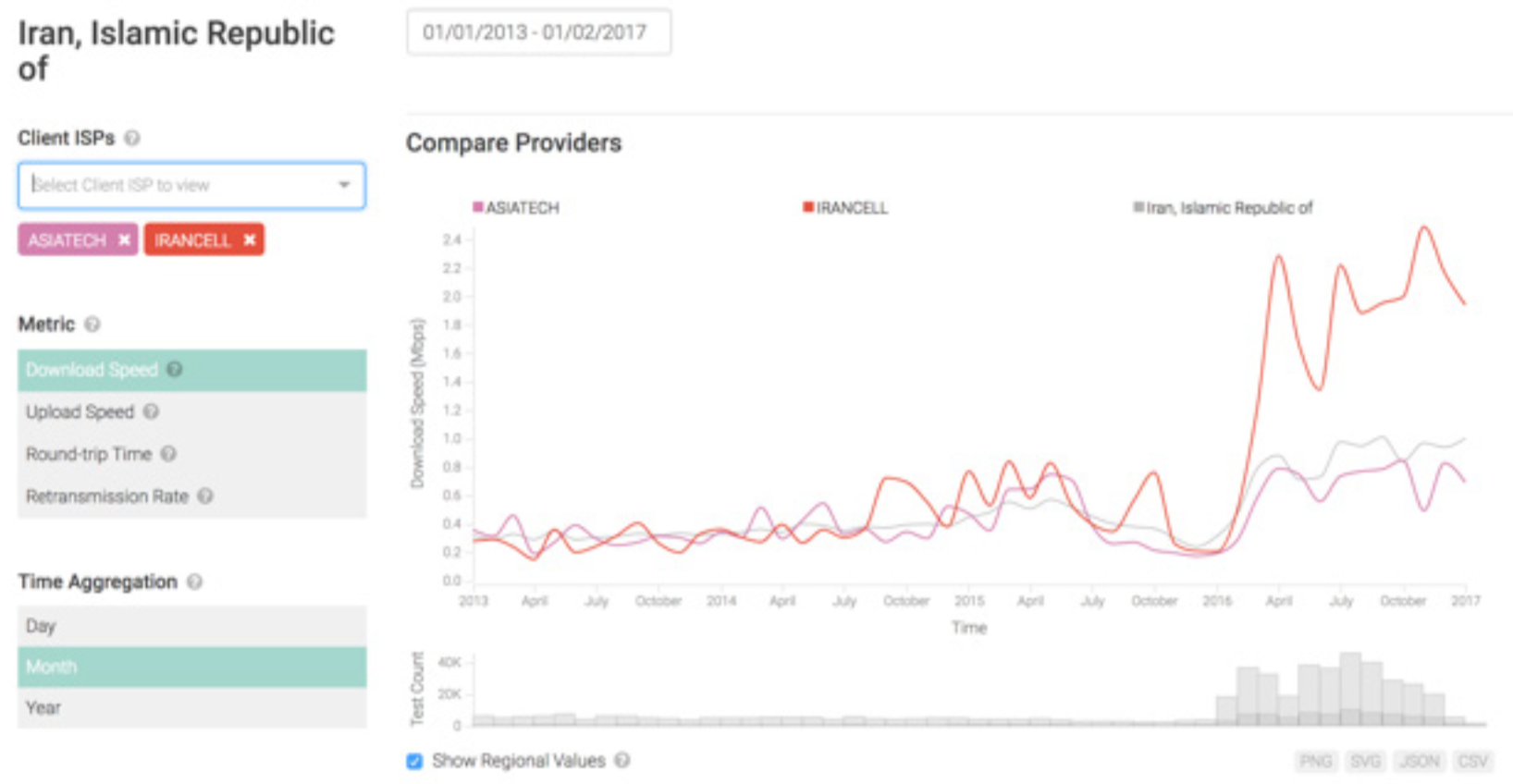
Chart compares Internet speed provided by Asiatech Company (household Internet) and Irancel (mobile Internet) between 2013 and 2017, focusing on international Internet traffic. Source: M-Lab website
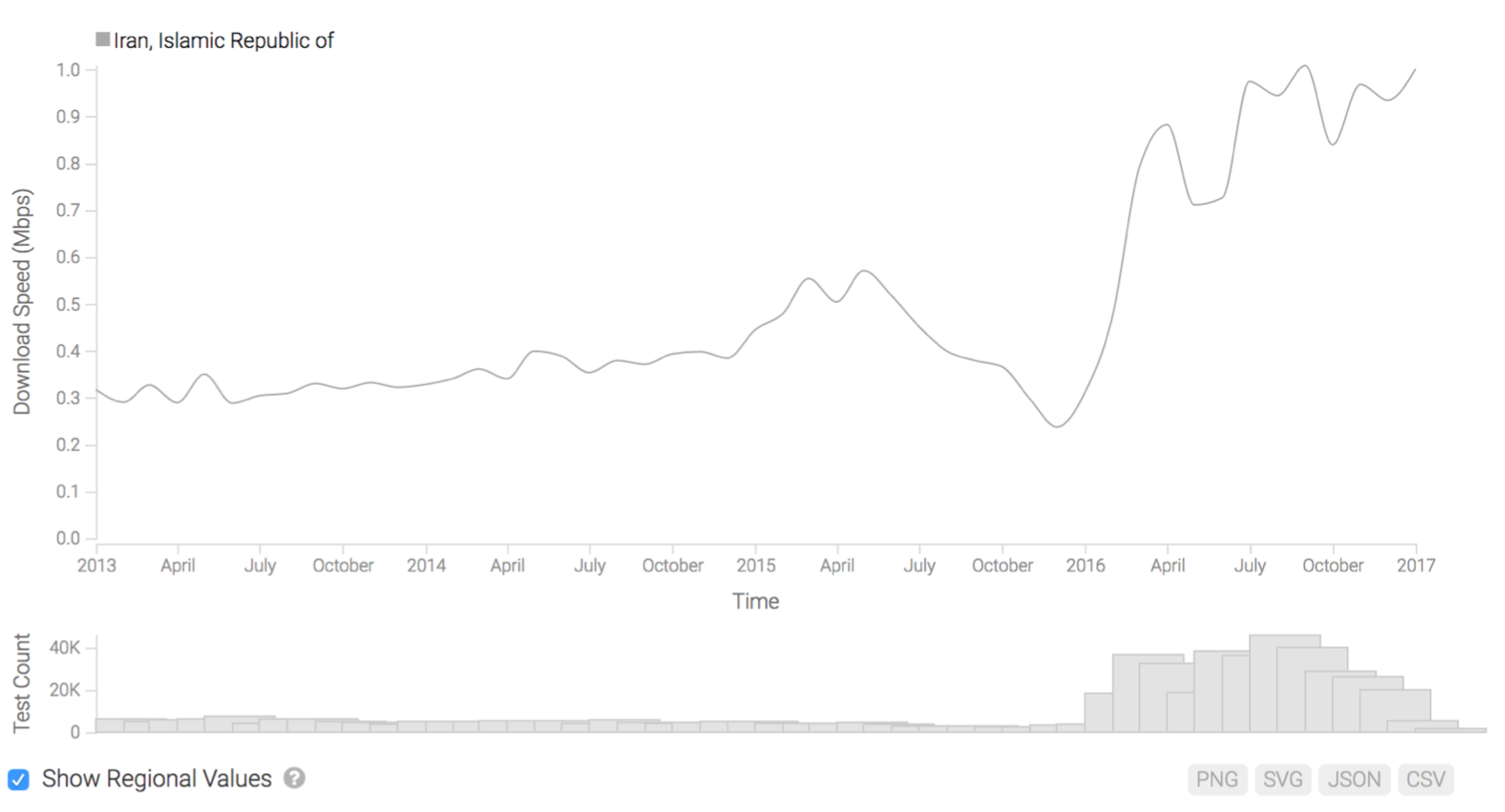
Chart compares average speed and Internet bandwidth changes for 20 internet service providers in Iran between 2013 and 2017, focusing on international Internet traffic. Source: M-Lab website
The opening of content delivery and data exchange centers during Rouhani’s first term has played an important role in the increased internet speed. The Internet Exchange Point (IXP) is a physical infrastructure responsible for reducing the data traffic being transferred between content delivery networks and internet service providers. The advantage to using the Internet Exchange Point is its role in reducing the traffic between content delivery networks and ISP’s. The reduction of data transfer costs and the increase in the bandwidth are among the results of the utilization of these centers.
Currently seven50 Internet Exchange Points (IXP) have been launched by the Communication Infrastructure Company, a government entity affiliated with the Ministry of Communication and Information Technology, in the cities of Tehran51, Qom52, Mashad53, Shiraz54, Tabriz55, Isfahan and Ahvaz.
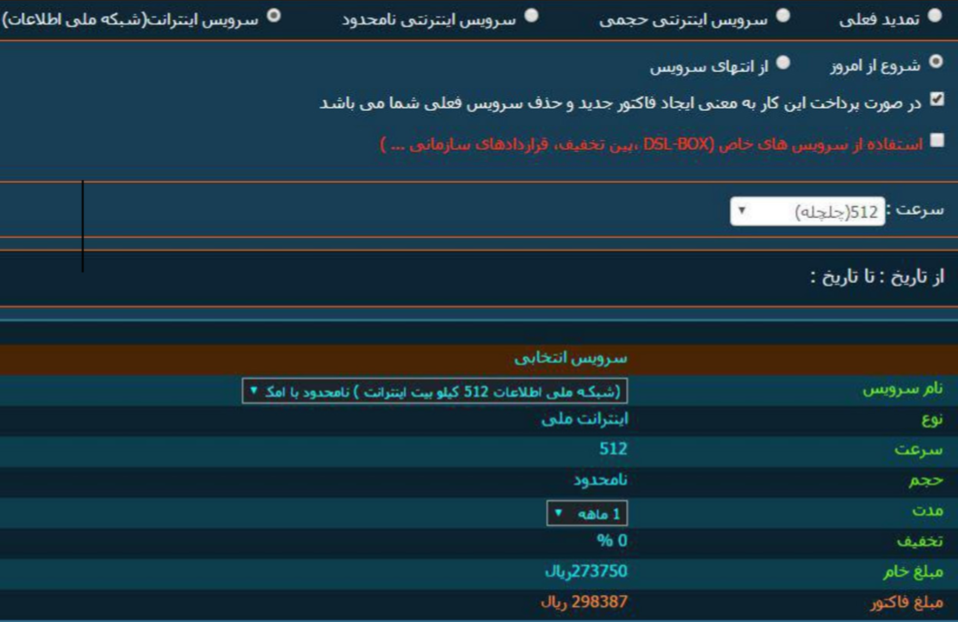
This image shows the sales panel for National Internet Network on the Asiatech company website, with the speed of 512 kilobytes at a price of $9 USD.
